 Last additions - JAPAN 日本 Last additions - JAPAN 日本 |
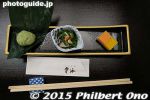
Appetizer, KyotoSep 27, 2016
|
|

TempuraSep 27, 2016
|
|
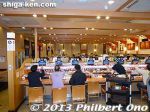
Large Kaiten Sushi restaurantSep 19, 2016
|
|
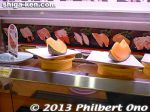
Kaiten SushiSep 19, 2016
|
|

Touch panel ordering for sushiSep 19, 2016
|
|
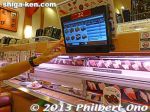
Sushi restaurantSep 19, 2016
|
|
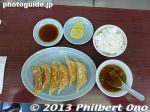
Gyoza with riceSep 19, 2016
|
|

Sake rice wineSep 19, 2016
|
|
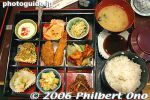
Chinese dinnerSep 19, 2016
|
|
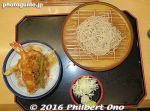
Small tempura donburi and cold soba noodles at TenyaSep 19, 2016
|
|

Sep 19, 2016
|
|

Sukiyaki dinnerSep 19, 2016
|
|

Yokosuka currySep 19, 2016
|
|

Shabu-shabu dinner with the shabu-shabu pot having a divider so we can try two different flavored broths.Sep 19, 2016
|
|

Kaki-fry teishoku or fried oystersSep 19, 2016
|
|

Gyudon beef bowlFeb 11, 2014
|
|

Loco mock with hamburger, gravy, and egg. For only 270 yen at a local supermarket. Not good though.Feb 11, 2014
|
|
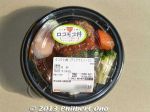
Loco moco bento. Feb 11, 2014
|
|

Takoyaki with pieces of octopus inside.Feb 11, 2014
|
|
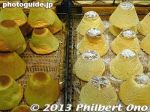
Pastries in the shape of Mt. Fuji to mark the designation of Mt. Fuji as a World Heritage Site in 2013.Feb 11, 2014
|
|
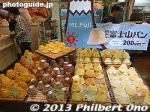
Pastries in the shape of Mt. Fuji sold at a Tomei Highway service area.Feb 11, 2014
|
|
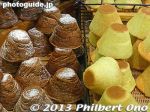
Pastries in the shape of Mt. Fuji to mark the designation of Mt. Fuji as a World Heritage Site in 2013.Feb 11, 2014
|
|
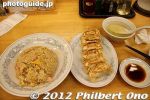
Cha-han fried rice and gyozaJun 02, 2013
|
|

Fried oysters in Hiroshima.Jun 02, 2013
|
|
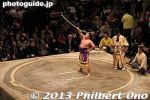
Jan 29, 2013
|
|

Hakuho beats Kakuryu.Jan 29, 2013
|
|
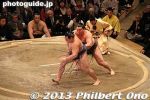
Jan 29, 2013
|
|
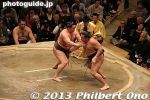
Jan 29, 2013
|
|
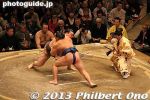
Jan 29, 2013
|
|
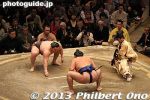
Jan 29, 2013
|
|
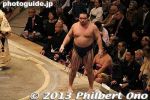
Ozeki Kakuryu in an 2013.Jan 29, 2013
|
|
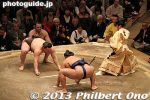
Jan 29, 2013
|
|
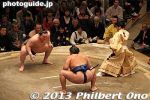
Jan 29, 2013
|
|
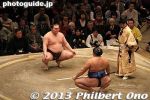
Jan 29, 2013
|
|
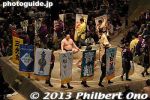
Jan 29, 2013
|
|

Yokozuna Hakuho vs. Ozeki Kakuryu in Jan 2013. They are both Mongolian.Jan 29, 2013
|
|

Jan 29, 2013
|
|
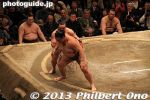
Kisenosato loses this one.Jan 29, 2013
|
|
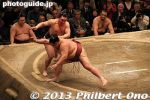
Harumafuji's common technique is to sidestep his opponent and push him out from behind.Jan 29, 2013
|
|

Jan 29, 2013
|
|
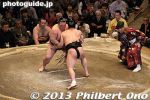
Jan 29, 2013
|
|
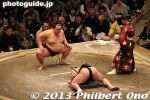
Harumafuji doing his very low stance.Jan 29, 2013
|
|

Jan 29, 2013
|
|
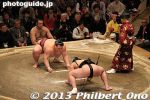
Jan 29, 2013
|
|
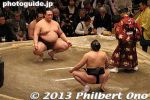
Jan 29, 2013
|
|
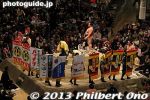
Jan 29, 2013
|
|
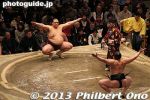
Ozeki Kisenosato vs. Yokozuna Harumafuji in Jan. 2013.Jan 29, 2013
|
|
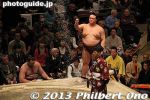
Ozeki KisenosatoJan 29, 2013
|
|
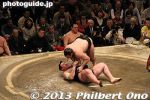
Jan 29, 2013
|
|

Jan 29, 2013
|
|
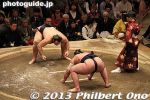
Jan 29, 2013
|
|

Jan 29, 2013
|
|
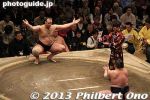
Ozeki Kotooshu in Jan 2013.Jan 29, 2013
|
|

Jan 29, 2013
|
|
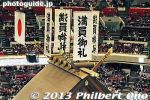
The "Full House" banners are unfurled above the Shinto-style roof.Jan 29, 2013
|
|
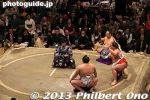
Jan 29, 2013
|
|

Jan 29, 2013
|
|
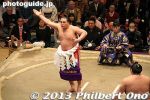
Jan 29, 2013
|
|
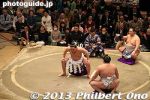
Jan 29, 2013
|
|
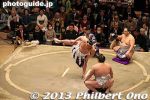
Jan 29, 2013
|
|
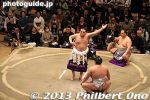
Jan 29, 2013
|
|

Jan 29, 2013
|
|
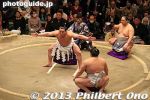
Jan 29, 2013
|
|
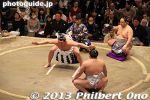
Jan 29, 2013
|
|

Jan 29, 2013
|
|
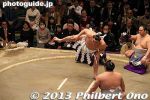
Jan 29, 2013
|
|
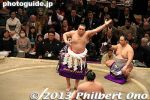
Yokozuna HarumafujiJan 29, 2013
|
|
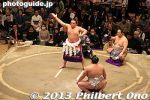
Jan 29, 2013
|
|
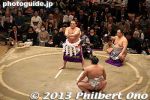
Jan 29, 2013
|
|
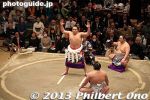
Yokozuna Harumafuji from Mongolia performs the dohyo-iri ring-entering ceremony.Jan 29, 2013
|
|
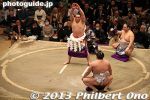
Jan 29, 2013
|
|
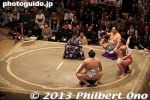
Yokozuna Harumafuji from Mongolia performs the dohyo-iri ring-entering ceremony.Jan 29, 2013
|
|
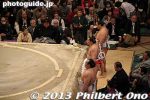
Jan 29, 2013
|
|

Next is Yokozuna Harumafuji.Jan 29, 2013
|
|
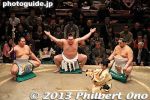
Jan 29, 2013
|
|
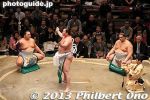
Jan 29, 2013
|
|
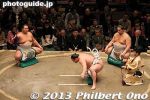
Jan 29, 2013
|
|

Jan 29, 2013
|
|
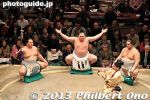
Yokozuna HakuhoJan 29, 2013
|
|
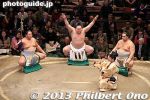
Yokozuna Hakuho from Mongolia performs the dohyo-iri ring-entering ceremony in Jan. 2013.Jan 29, 2013
|
|
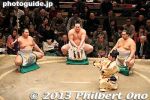
Jan 29, 2013
|
|
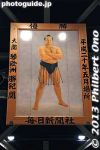
Giant portrait of Ozeki Kotooshu.Jan 29, 2013
|
|
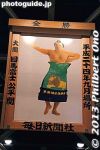
Giant portrait of HarumafujiJan 29, 2013
|
|
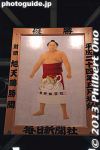
Giant portrait of KyokutenhoJan 29, 2013
|
|
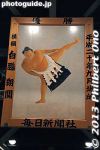
Giant portrait of Yokozuna HakuhoJan 29, 2013
|
|

Giant portrait of BarutoJan 29, 2013
|
|
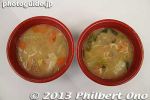
I usually eat two bowls. Only 250 yen per bowl.Jan 29, 2013
|
|
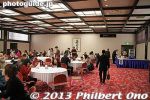
The banquet hall in the basement is used as a dining room during lunch time during tournaments. 大広間Jan 29, 2013
|
|

The chanko-nabe menu changes a few times during the tournament. The recipes are from various sumo stables.Jan 29, 2013
|
|

Entrance to the dining room for chanko-nabe. It's downstairs in the basement.Jan 29, 2013
|
|
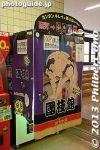
Print Club photo sticker booth.Jan 29, 2013
|
|
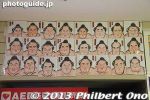
Jan 29, 2013
|
|

Jan 29, 2013
|
|
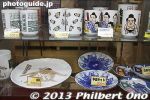
Jan 29, 2013
|
|
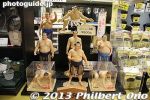
Sumo figurines.Jan 29, 2013
|
|
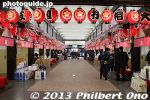
Sumo service entrance for groups.Jan 29, 2013
|
|
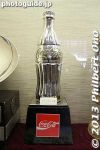
Jan 29, 2013
|
|
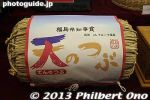
Another prize from Fukushima Prefecture.Jan 29, 2013
|
|
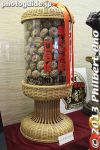
Mushrooms from Oita Prefecture.Jan 29, 2013
|
|
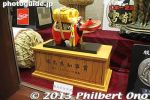
Prize from Fukushima Prefecture.Jan 29, 2013
|
|

Prize from Miyazaki Prefecture.Jan 29, 2013
|
|
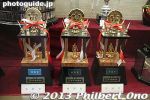
Trophies for the Three Outstanding Prizes (Technique, Outstanding Performance, and Fighting Spirit) from the Japan Sumo Association.Technique Prize (Gino-sho), Outstanding Performance (for most Yokozuna/Ozeki upsets, Shukun-sho), and Fighting Spirit (Kanto-sho).Jan 29, 2013
|
|

Plaques for the Three Outstanding Prizes (Technique, Outstanding Performance, and Fighting Spirit) awarded by two newspapers.Technique Prize (Gino-sho), Outstanding Performance (for most Yokozuna/Ozeki upsets, Shukun-sho), and Fighting Spirit (Kanto-sho).Jan 29, 2013
|
|
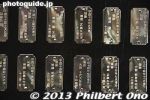
Closeup of old Nameplates of tournament winners that were on the Emperor's Cup.Jan 29, 2013
|
|

Old Nameplates of tournament winners that were on the Emperor's Cup.Jan 29, 2013
|
|

Old Nameplates of tournament winners that were on the Emperor's Cup.Jan 29, 2013
|
|
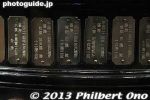
Closeup of nameplates of tournament winners on Emperor's Cup.Jan 29, 2013
|
|
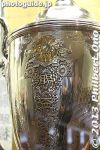
Closeup of Emperor's Cup.Jan 29, 2013
|
|
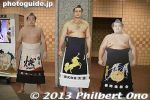
Jan 29, 2013
|
|
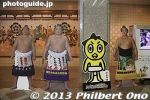
In the entrance hall are life-size cutouts of the top wrestlers.Jan 29, 2013
|
|

Two small shrines outside.Jan 29, 2013
|
|
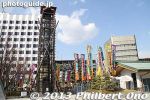
Taiko drum towerJan 29, 2013
|
|

Jan 29, 2013
|
|

Jan 29, 2013
|
|

After you go through the ticket gate, the front of Kokugikan has two large murals.Jan 29, 2013
|
|
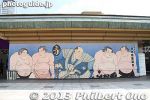
Jan 29, 2013
|
|

A young woman personalizes her cell phone to the max, making it a work of art (?).Sep 11, 2009
|
|

Mar 22, 2009
|
|

Mar 22, 2009
|
|

Mar 22, 2009
|
|

Mar 22, 2009
|
|

Mar 22, 2009
|
|

Mar 22, 2009
|
|

Mar 22, 2009
|
|

Mar 22, 2009
|
|

Mar 22, 2009
|
|

Mar 22, 2009
|
|

Mar 22, 2009
|
|
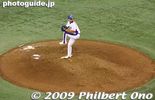
Mar 22, 2009
|
|
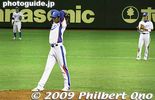
Mar 22, 2009
|
|

Mar 22, 2009
|
|

Mar 22, 2009
|
|

Mar 22, 2009
|
|

Mar 22, 2009
|
|
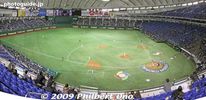
Mar 22, 2009
|
|

Mar 22, 2009
|
|

Mar 22, 2009
|
|

Mar 22, 2009
|
|

Mar 22, 2009
|
|

Mar 22, 2009
|
|

Mar 22, 2009
|
|

Mar 22, 2009
|
|

Mar 22, 2009
|
|

Mar 22, 2009
|
|

Mar 22, 2009
|
|

Mar 22, 2009
|
|

Mar 22, 2009
|
|

Mar 22, 2009
|
|

The 2nd World Baseball Classic's Asia Round was held in March 2009. This game was between Korea and China on March 8, 2009 at Tokyo Dome.Mar 22, 2009
|
|

Mar 22, 2009
|
|
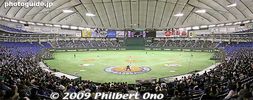
Mar 22, 2009
|
|

Bow twirling (called Yumitori-shiki) is the final ceremony at the end of the tournament day which is around 6 pm. Feb 22, 2009
|
|

The cushions are quickly cleared away.Feb 22, 2009
|
|

Feb 22, 2009
|
|

The bow twirler is a Makushita Division wrestler (third highest division). Afterward, the entire sumo ring is covered with a cloth. Also see my Kokugikan photos here.Feb 22, 2009
|
|

The thrown cushions are hastily piled up at ringside.Feb 22, 2009
|
|

AsashoryuFeb 22, 2009
|
|
|

Hakuho collects his pay.Feb 22, 2009
|
|

Lots of sponsors for this match between Asashoryu and Hakuho on Jan. 19, 2006. Both Mongolians.Feb 22, 2009
|
|

There goes Asashoryu.Feb 22, 2009
|
|

If you want to photograph sumo, you'll need a good telephoto lens. The sumo ring has mostly tungsten lighting.Feb 22, 2009
|
|

Feb 22, 2009
|
|

Asashoryu and Hakuho glare at each other.Feb 22, 2009
|
|

The striking yokozuna upset makes the crowd go wild as they throw zabuton cushions in glee.Feb 22, 2009
|
|

Sumo scoreboard. The names of all the wrestlers are displayed in the order of the sumo matches (from right to left). The winner is indicated with a red lamp.Feb 22, 2009
|
|

Feb 22, 2009
|
|

Hakuho throws salt on the sumo ring.Feb 22, 2009
|
|

A false start by Hakuho.Feb 22, 2009
|
|

Feb 22, 2009
|
|

Another match with Asashoryu.Feb 22, 2009
|
|

A large cushion is brought in for Kotooshu.Feb 22, 2009
|
|

Feb 22, 2009
|
|

Asashoryu won this one.Feb 22, 2009
|
|

The most famous Mongolian sumo wrestler is Asashoryu who has been quite controversial at times.Feb 22, 2009
|
|

Hakurozan on the right in Jan. 2006.Feb 22, 2009
|
|

Kotooshu sits on his own cushion at ringside before his bout.Feb 22, 2009
|
|

Besides Europeans, there are numerous Mongolians in sumo. This is Hakuho in May 2005. He's now a yokozuna.Feb 22, 2009
|
|
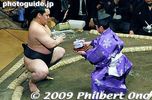
Asashoryu collects a big paycheck.Feb 22, 2009
|
|

Feb 22, 2009
|
|

Seeing sumo live is much better than seeing it on TV. The atmosphere can't be beat when you're actually there. Taking photos and videos are of course permitted.Feb 22, 2009
|
|

Kokkai means "Black Sea."Feb 22, 2009
|
|

Hakurozan at the initial charge.Feb 22, 2009
|
|

Ama, another Mongolian and now Yokozuna Harumafuji. The Mongolians are taking over the top echelons of sumo dominated by foreigners. We haven't had a Japanese yokozuna since 2003.Feb 22, 2009
|
|

The referee points his fan toward the side of the winner.Feb 22, 2009
|
|

Roho vs. TochiazumaFeb 22, 2009
|
|

Roho vs. TochiazumaFeb 22, 2009
|
|

HakuhoFeb 22, 2009
|
|

Kokkai on the left. He is from Georgia in eastern Europe.Feb 22, 2009
|
|

And into the front row of spectators. I've never heard of any spectators who got injured by sumo wrestlers falling on top of them.Feb 22, 2009
|
|

Feb 22, 2009
|
|

Feb 22, 2009
|
|

Trying for a yorikiri or frontal push out while grabbing the belt.Feb 22, 2009
|
|

There were also two Russian sumo wrestlers. Roho and his brother Hakurozan. This is Roho in May 2005. Both got busted for drug use in 2008 and were kicked out of sumo.Feb 22, 2009
|
|

The wrestler must start the match from a "three-point stand" position where both his feet and at least one of his hands are touching the ground.Feb 22, 2009
|
|

Referees are also ranked. The higher ranking referees appear for the matches of the higher-ranking rikishi. They have different dress as the rank goes higher. The lowest-ranked referee may be barefoot.Feb 22, 2009
|
|

The color of the tassel hanging from the referee's fan indicates his rank. Purple or purple and white indicates the highest ranking referee who judges the yokozuna matches. A red tassel is for the sanyaku matches (Ozeki, Sekiwake, Komusubi).Feb 22, 2009
|
|

Once in a while, they freshen up the sumo ring, sweeping it.Feb 22, 2009
|
|

Both tumble off the ring...Feb 22, 2009
|
|

The referee is thrown into the crowd by the wrestler (by accident, of course). An attendant carries the water bucket out of the way so the referee does not crash into it and spill the water. A judge looks on concerned, while some spectators are amused.Feb 22, 2009
|
|

Grabbing the opponent's mawashi belt to throw him down or out is a key technique.Feb 22, 2009
|
|

Kotooshu on the right.Feb 22, 2009
|
|

He defeats his opponent who also pushes down the referee.Feb 22, 2009
|
|

There are many sumo techniques (called kimarite) to defeat the opponent. This is okuridashi or rear push out. Once your back is toward the opponent, you have little chance to recover.Feb 22, 2009
|
|

Kotooshu is from Bulgaria.Feb 22, 2009
|
|

Sometimes a match is too close to call. The ringside judges will hold a conference in the ring and either decide who was the winner or declare a rematch. The referee must accept the decision. Judges in the video room may also examine a replay on video.Feb 22, 2009
|
|

Feb 22, 2009
|
|

Overarm throw called uwatenage.Feb 22, 2009
|
|

Many matches also have sponsor who pay money to the winner of the match. Each banner represents a sponsor.Feb 22, 2009
|
|

The initial charge or tachiai is crucial, and can determine who will win the match. The rikishi on the right has charged earlier than the other, giving him the advantage.Feb 22, 2009
|
|

After losing, Takamisakari dejectedly leaves the ring. The crowd sympathizes with him and applaud.Feb 22, 2009
|
|

On the ring, they spread their arms to show that they carry no weapons.Feb 22, 2009
|
|

Often the wrestlers will lock onto each other while gripping each other's mawashi belts (made of silk). (Ozeki Kaio vs. Tamanoshima in May 2005.)Feb 22, 2009
|
|

TakamisakariFeb 22, 2009
|
|

Oshidashi or frontal push out, a common technique.Feb 22, 2009
|
|

Takamisakari does his "Robocop" act in his corner to psych himself up.Feb 22, 2009
|
|

They glare at each other a few times before the match. They repeat the salt throwing and glaring for four minutes before the match starts.Feb 22, 2009
|
|

They spit out the water into a small bucket in the corner.Feb 22, 2009
|
|
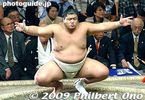
Musoyama (in Sept. 2004).Feb 22, 2009
|
|

Then they rinse their mouths with water for purification. Another wrestler holds the water ladle and tissue paper.Feb 22, 2009
|
|

Then they throw salt onto the ring for purification. They do this a few times before the match. These are all Shinto-based religious rituals. Even the roof above the sumo ring looks like a Shinto shrine roof.Feb 22, 2009
|
|
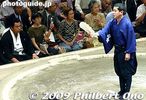
The yobidashi changes once in a while. Dressed in black and sitting as one of the judges is former yokozuna Chiyonofuji, now Kokonoe oyakata.Feb 22, 2009
|
|

A portrait of Asashoryu is ceremoniously unveiled in the Kokugikan. On the right is the tournament date, on the left is the rikishi's name, and the sponsor's name is on the bottom. The portrait is actually B/W photo hand-painted in color.Feb 22, 2009
|
|

Side view of Asashoryu's dohyo-iri. Looks like we'll have to wait a lot longer to ever see another Japanese yokozuna. No one is even on the horizon as of this writing. The next yokozuna might as well be another foreigner (Baruto perhaps).Feb 22, 2009
|
|
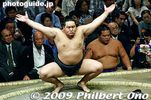
AsashoryuFeb 22, 2009
|
|

The two rikishi who were called up go on the ring and stomp their foot.Feb 22, 2009
|
|

Also on the first day of the tournament, the previous tournament winner receives a large portrait of himself to be hung in the Kokugikan. This is the ceremony for it.Feb 22, 2009
|
|

He turns around and goes back to his place. You can see that his rope belt is tied with a single loop on the back. This is the Unryu style. It differs from the Shiranui style performed by Hakuho.Feb 22, 2009
|
|

Feb 22, 2009
|
|

The yokozuna dohyo-iri ends. It is performed every day during the 15-day tournament as well as at exhibition tournaments.Feb 22, 2009
|
|

And so the day's sumo matches continue as the wrestler walks up to the sumo ring to wait his turn.Feb 22, 2009
|
|

Asashoryu performing the yokozuna dohyo-iri or ring-entering ceremony. There are two styles of the yokozuna dohyo-iri. One is the Unryu style which Asashoryu performs. One hand is on his hip as he rises here. 雲龍型Feb 22, 2009
|
|

Feb 22, 2009
|
|

In this case, Asashoryu receives a new portrait which is then unveiled. The portrait is usually sponsored by a major newspaper.Feb 22, 2009
|
|

The rikishi sits at ringside until his name is called by the yobidashi (caller or usher) here who is announcing the wrestler's name while holding a fan.Feb 22, 2009
|
|

He claps his hands and stomps his foot.Feb 22, 2009
|
|

Feb 22, 2009
|
|
|

Claps his hands for the last time. The man in purple is the referee.Feb 22, 2009
|
|

Then he steps forward and turns to the front.Feb 22, 2009
|
|

Feb 22, 2009
|
|

The two rikishi who escort him are either from his own sumo stable or an affiliate sumo stable.Feb 22, 2009
|
|

He stomps the ground to drive away evil.Feb 22, 2009
|
|

Feb 22, 2009
|
|

The yokozuna is flanked by two attendants, a sword bearer on the left and dew sweeper on the right. Their kesho mawashi ceremonial aprons are a matching set.Feb 22, 2009
|
|

The ring-entering ceremony starts at around 4 pm. The yokozuna's rope belt and zig-zag paper streamers look very similar to the sacred rope found at Shinto shrines.Feb 22, 2009
|
|

He extends his arms to show that he conceals no weapons. I'm not too crazy about the way Asashoryu does the dohyo-iri though. A few little details make it less dignified.Feb 22, 2009
|
|

Feb 22, 2009
|
|

Baruto, from Estonia, at the center. He's well on his way to become Ozeki. There are many foreign sumo wrestlers. Unfortunately, there are none from Hawaii. Mostly Europeans and Mongolians.Feb 22, 2009
|
|

Feb 22, 2009
|
|

He claps his hands to get the attention of the gods. 横綱土俵入りFeb 22, 2009
|
|

Right after the Makunouchi dohyo-iri is the Yokozuna Dohyo-iri. This is Yokozuna Asashoryu. A major highlight during the tournament.Feb 22, 2009
|
|
|
|